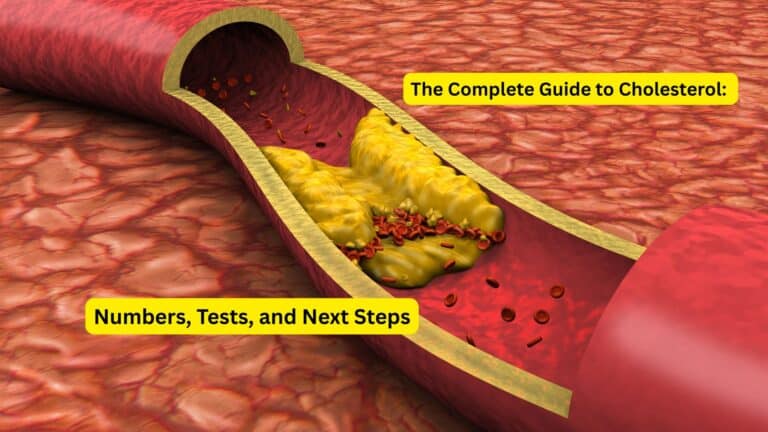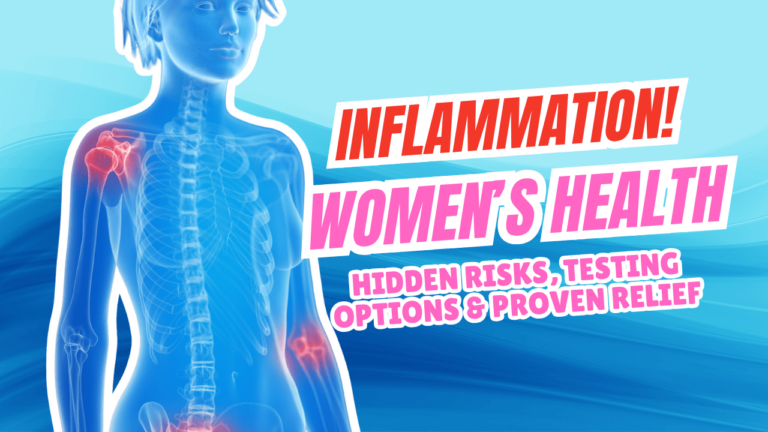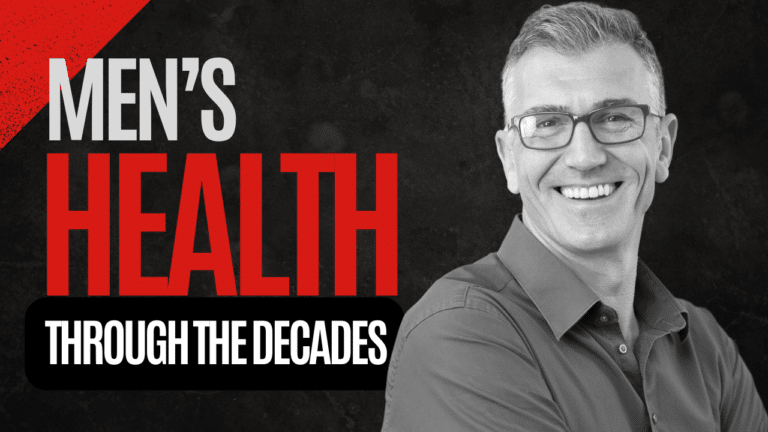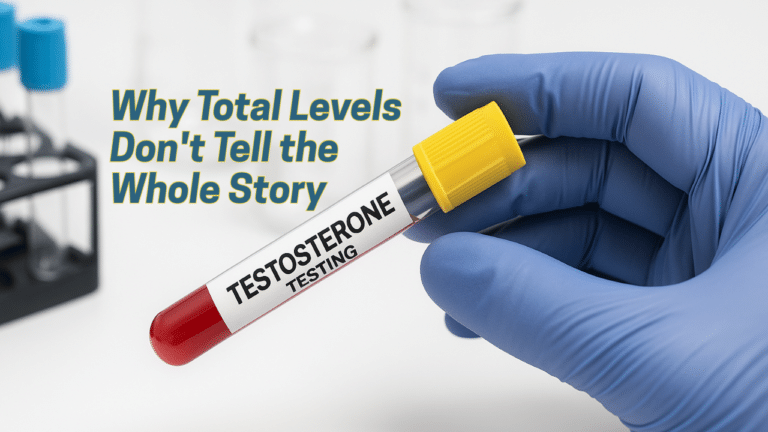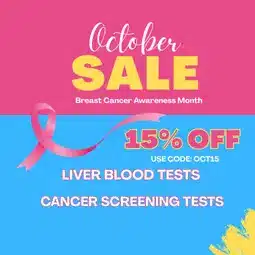The connection between daily lifestyle choices and cancer risk represents one of the most empowering discoveries in modern medicine. Unlike genetic factors or environmental exposures beyond our control, the foods we eat, how much we move, and habits we maintain offer direct pathways to reducing cancer risk. Research consistently demonstrates that modifiable lifestyle factors contribute to 40-50% of all cancer cases, meaning nearly half of cancers could potentially be prevented through informed choices about diet, exercise, and daily habits.
This relationship between lifestyle and cancer prevention extends far beyond simple correlations—it reflects complex biological mechanisms involving inflammation, hormone regulation, immune function, and cellular repair processes. Understanding these connections empowers individuals to make evidence-based decisions that significantly impact their long-term health outcomes. The most encouraging aspect of lifestyle-based cancer prevention is that it’s never too late to start making beneficial changes, with research showing improvements in cancer risk even when healthy habits begin later in life.
The Role of Diet in Cancer Prevention
Dietary choices profoundly influence cancer risk through multiple biological pathways, affecting everything from cellular DNA repair mechanisms to hormonal balance and inflammatory responses. The evidence supporting nutrition’s role in cancer prevention has grown increasingly robust, with large-scale studies consistently demonstrating significant risk reductions among people following specific dietary patterns. Modern research moves beyond examining individual nutrients to focus on overall eating patterns that provide synergistic protective effects.
Protective Foods and Nutrients
Plant-based foods form the foundation of cancer-preventive eating patterns, providing essential compounds that actively protect against cellular damage and support the body’s natural defense mechanisms. Fruits, vegetables, legumes, whole grains, nuts, and omega-3 fatty acids deliver antioxidants, fiber, phytochemicals, and anti-inflammatory compounds that work together to reduce cancer risk through multiple biological pathways.
Cruciferous vegetables like broccoli, cauliflower, and Brussels sprouts contain sulfur compounds that enhance the body’s ability to eliminate potential carcinogens. Berries provide anthocyanins and other polyphenols that protect DNA from oxidative damage. Fatty fish rich in omega-3 fatty acids help regulate inflammatory processes that can promote cancer development. These foods don’t just provide isolated nutrients—they deliver complex matrices of beneficial compounds that work synergistically.
The protective effects of plant foods extend beyond their antioxidant content to include fiber’s role in maintaining healthy gut bacteria and supporting regular elimination of waste products. Fiber-rich foods also help regulate blood sugar and insulin levels, which can influence cancer risk, particularly for hormone-sensitive cancers.
Beneficial Dietary Patterns
Mediterranean and plant-based diets consistently show protective effects against multiple cancer types, demonstrating that overall eating patterns matter more than individual food choices. The Mediterranean diet emphasizes olive oil, nuts, fish, vegetables, fruits, and whole grains while limiting red meat and processed foods. Plant-based diets focus on whole plant foods while minimizing or eliminating animal products.
These dietary patterns share common elements that likely contribute to their protective effects: high fiber intake, abundant antioxidants and anti-inflammatory compounds, healthy fats, and limited processed foods. They also tend to support healthy weight maintenance, which independently reduces cancer risk.
Research on these dietary patterns reveals dose-response relationships—the more closely people follow these eating patterns, the greater their protection against cancer. This suggests that even partial adoption of these dietary approaches can provide meaningful benefits.
Foods to Limit for Cancer Prevention
Certain foods and food components consistently appear linked to increased cancer risk, particularly when consumed regularly over long periods. Red and processed meats show the strongest associations with colorectal cancer risk, likely due to compounds formed during processing and cooking, as well as naturally occurring substances that can promote inflammation and cellular damage.
Processed meats like bacon, sausages, and deli meats contain nitrates and nitrites that can form potentially carcinogenic compounds in the body. High-temperature cooking methods for red meat can create heterocyclic amines and polycyclic aromatic hydrocarbons, which have shown carcinogenic properties in laboratory studies.
Added sugars and refined carbohydrates may contribute to cancer risk indirectly through their effects on body weight, insulin levels, and inflammation. High sugar intake can promote obesity and create metabolic conditions that favor cancer development, particularly for hormone-dependent cancers.
Exercise and Physical Activity
Physical activity represents one of the most powerful lifestyle interventions for cancer prevention, with benefits extending across multiple cancer types and working through various biological mechanisms. The protective effects of exercise go well beyond weight control to include direct impacts on immune function, hormone regulation, and cellular repair processes that influence cancer development.
Exercise Recommendations and Guidelines
Current guidelines recommend at least 150 minutes of moderate-intensity or 75 minutes of vigorous-intensity physical activity weekly for optimal cancer prevention benefits. This translates to about 30 minutes of moderate activity like brisk walking on most days of the week, or shorter sessions of more intense activities like running or cycling.
The benefits of physical activity for cancer prevention follow a dose-response relationship—more activity generally provides greater protection, though even modest increases in activity can provide meaningful benefits for sedentary individuals. The key lies in finding sustainable activities that can be maintained long-term rather than pursuing extreme exercise regimens that may not be sustainable.
Resistance training and muscle-strengthening activities complement cardiovascular exercise by supporting healthy body composition and metabolic function. The combination of aerobic and resistance exercise appears most beneficial for cancer prevention, supporting both cardiovascular health and maintaining lean muscle mass.
Cancer-Specific Benefits
Regular physical activity significantly lowers the risk of breast, colon, and endometrial cancers, with emerging evidence suggesting benefits for additional cancer types including lung, kidney, and bladder cancers. The mechanisms underlying these protective effects vary by cancer type but often involve hormonal regulation, immune function enhancement, and inflammation reduction.
For breast cancer, exercise helps regulate estrogen levels and improve insulin sensitivity, both of which influence cancer risk. Physical activity also supports healthy immune function, which plays a crucial role in detecting and eliminating abnormal cells before they can develop into cancers.
Colon cancer prevention through exercise likely involves multiple mechanisms including improved digestive function, reduced inflammation, and enhanced immune surveillance of the digestive tract. Exercise also helps maintain healthy body weight and metabolic function, which independently influence colon cancer risk.
Mechanisms of Cancer Protection
Exercise influences cancer risk through multiple biological pathways that work together to create a less favorable environment for cancer development. Physical activity helps regulate hormones like insulin, insulin-like growth factor, and sex hormones that can influence cancer growth when present at elevated levels.
Regular exercise also enhances immune system function, improving the body’s ability to recognize and eliminate abnormal cells before they can develop into cancers. Physical activity reduces chronic inflammation throughout the body, which otherwise can contribute to DNA damage and cancer development over time.
The metabolic benefits of exercise extend to improved insulin sensitivity and glucose regulation, which can influence cancer risk particularly for cancers associated with obesity and metabolic dysfunction. Exercise also supports healthy circulation and oxygenation of tissues, which may help maintain normal cellular function.
Weight Management and Obesity Prevention
Maintaining a healthy body weight throughout life represents one of the most important modifiable factors for cancer prevention. Obesity contributes to approximately 20% of all cancer cases, making weight management a critical component of comprehensive cancer prevention strategies. The relationship between excess body weight and cancer risk involves complex biological mechanisms that create conditions favorable for cancer development and progression.
Biological Mechanisms Linking Obesity to Cancer
Excess adipose tissue functions as an active endocrine organ, producing hormones and inflammatory compounds that can promote cancer development. Fat tissue increases production of estrogen, which can fuel the growth of hormone-sensitive cancers like breast and endometrial cancer. Obesity also promotes insulin resistance, leading to elevated insulin and insulin-like growth factor levels that can stimulate cell proliferation and inhibit cell death.
Chronic low-grade inflammation associated with obesity creates an environment that can damage DNA and promote cancer development. Adipose tissue produces inflammatory cytokines and other signaling molecules that can interfere with normal cellular processes and create conditions favorable for tumor growth.
The distribution of body fat also matters for cancer risk, with abdominal obesity showing particularly strong associations with cancer development. Visceral fat surrounding internal organs appears especially metabolically active, contributing more significantly to hormonal and inflammatory changes than subcutaneous fat.
Weight Management Strategies
Successful long-term weight management typically involves sustainable changes to both eating patterns and physical activity levels rather than short-term restrictive diets. The most effective approaches focus on creating moderate caloric deficits through a combination of reduced energy intake and increased energy expenditure through physical activity.
Dietary strategies that support weight management while providing cancer-protective benefits include emphasizing whole, unprocessed foods with high nutritional density and satiety value. Foods high in fiber, protein, and healthy fats tend to promote feelings of fullness while providing essential nutrients that support overall health.
Regular physical activity plays a crucial role not only in initial weight loss but particularly in long-term weight maintenance. Exercise helps preserve lean muscle mass during weight loss, supports healthy metabolic function, and provides psychological benefits that can support long-term adherence to healthy lifestyle patterns.
Alcohol and Tobacco Use
Two of the most significant modifiable risk factors for cancer prevention involve substances that many people consume regularly—alcohol and tobacco products. Both represent clear carcinogens with well-established links to multiple cancer types, yet they remain legal and socially acceptable in many contexts. Understanding the cancer risks associated with these substances empowers informed decision-making about their use.
Alcohol as a Carcinogen
Alcohol consumption increases the risk of multiple cancers including breast, liver, oral, esophageal, and colorectal cancers, with risk increasing along with consumption levels. Even moderate alcohol consumption carries some cancer risk, leading many health organizations to recommend limiting intake or avoiding alcohol entirely for cancer prevention.
The carcinogenic effects of alcohol involve multiple mechanisms including direct DNA damage from alcohol metabolites, interference with nutrient absorption and metabolism, and hormonal effects that can promote cancer development. Acetaldehyde, the primary metabolite of alcohol, can bind to DNA and proteins, causing cellular damage that may lead to cancer.
Alcohol also affects folate metabolism and can interfere with DNA repair mechanisms, potentially increasing susceptibility to cancer-causing genetic changes. For hormone-sensitive cancers like breast cancer, alcohol can increase circulating estrogen levels, contributing to increased cancer risk.
Tobacco: The Leading Preventable Cause
Tobacco use remains responsible for approximately 25% of all cancer deaths, making it the single most important preventable cause of cancer. While lung cancer represents the most well-known tobacco-related cancer, smoking increases risk for cancers throughout the body including bladder, kidney, cervical, pancreatic, and many others.
The carcinogenic compounds in tobacco smoke number in the thousands, with many directly damaging DNA and interfering with cellular repair mechanisms. These compounds circulate throughout the body via the bloodstream, explaining why tobacco use increases cancer risk for organs beyond the lungs.
Quitting smoking provides immediate and long-term benefits for cancer risk reduction, with risk declining progressively over time after cessation. Even long-term smokers can significantly reduce their cancer risk by quitting, though the sooner cessation occurs, the greater the potential benefits.
Sun Protection and Skin Cancer Prevention
Skin cancer represents one of the most preventable forms of cancer, with the vast majority of cases directly attributable to ultraviolet radiation exposure from the sun or artificial sources like tanning beds. Effective sun protection strategies can dramatically reduce skin cancer risk while still allowing individuals to enjoy outdoor activities safely.
Understanding UV Radiation Risks
Ultraviolet radiation causes skin cancer by directly damaging DNA in skin cells, leading to genetic mutations that can result in uncontrolled cell growth. Both UVA and UVB radiation contribute to skin cancer risk, though through different mechanisms and with varying effects on different types of skin cancer.
UVB radiation primarily affects the outer layers of skin and is responsible for sunburns, while UVA radiation penetrates deeper and contributes to premature aging and skin cancer development. Both types of UV radiation can cause DNA damage that accumulates over time, with childhood and adolescent exposure being particularly significant for long-term cancer risk.
The intensity of UV radiation varies based on factors including time of day, season, latitude, altitude, and weather conditions. Understanding these variables helps individuals make informed decisions about when and how to protect themselves from excessive UV exposure.
Comprehensive Sun Protection Strategies
Effective sun protection involves multiple complementary strategies rather than relying on any single approach. Broad-spectrum sunscreen with appropriate SPF provides important protection, but works best when combined with other protective measures like protective clothing, seeking shade, and timing outdoor activities appropriately.
Protective clothing offers reliable sun protection that doesn’t wear off or require reapplication like sunscreen. Wide-brimmed hats protect the face, ears, and neck, while long-sleeved shirts and long pants provide coverage for the arms and legs. Specially designed sun-protective clothing with ultraviolet protection factor ratings offers enhanced protection for extended outdoor activities.
Seeking shade during peak UV hours (typically 10 AM to 4 PM) significantly reduces exposure intensity. However, indirect UV radiation can still cause exposure even in shade, making protective clothing and sunscreen important even when not in direct sunlight.
Integrated Lifestyle Approaches
The most effective cancer prevention strategies involve comprehensive lifestyle approaches that address multiple risk factors simultaneously rather than focusing on individual behaviors in isolation. Research increasingly demonstrates that combining healthy diet, regular exercise, tobacco avoidance, limited alcohol consumption, and sun protection provides synergistic benefits that exceed the sum of individual interventions.
Synergistic Effects of Multiple Interventions
When multiple healthy lifestyle factors are combined, they create biological environments that are particularly hostile to cancer development. For example, regular exercise enhances the cancer-protective effects of healthy eating by improving nutrient utilization, reducing inflammation, and supporting healthy hormone balance.
Similarly, maintaining healthy body weight amplifies the benefits of both diet and exercise interventions while reducing the cancer-promoting effects of excess adipose tissue. The combination of these factors creates positive feedback loops that support long-term adherence to healthy behaviors.
Stress management and adequate sleep, while not always emphasized in cancer prevention discussions, play important supporting roles by regulating hormones, supporting immune function, and helping maintain other healthy behaviors. Chronic stress and poor sleep can undermine the benefits of diet and exercise interventions.
Emerging Areas of Research
Current research explores additional lifestyle factors that may influence cancer risk, including the role of gut microbiome health in cancer prevention. The trillions of bacteria living in our digestive systems influence immune function, inflammation, and metabolism in ways that may significantly impact cancer risk.
Environmental factors within our control, such as exposure to household chemicals and air pollution, represent additional areas where lifestyle choices can influence cancer risk. While these factors may seem beyond individual control, choices about products used in homes and transportation methods can meaningfully impact exposure levels.
The field of chronobiology—the study of biological rhythms—reveals that when we eat, sleep, and exercise may be as important as what we eat or how much we exercise. Maintaining regular circadian rhythms through consistent sleep schedules and meal timing may provide additional cancer-protective benefits.
FAQ Section
Q: How does diet influence cancer risk?
A: Diets rich in fruits, vegetables, whole grains, and healthy fats provide protective compounds that reduce cancer risk, while diets high in red and processed meats, added sugars, and saturated fats increase risk for several cancer types.
Q: How much exercise is needed for cancer prevention?
A: At least 150 minutes of moderate-intensity or 75 minutes of vigorous-intensity physical activity weekly provides significant cancer prevention benefits, with additional benefits from strength training exercises.
Q: Does alcohol increase cancer risk?
A: Yes, alcohol is a known carcinogen linked to breast, liver, colorectal, and several other cancers. Even moderate consumption carries some risk, leading many experts to recommend limiting or avoiding alcohol for cancer prevention.
Q: Why is maintaining a healthy weight so important for cancer prevention?
A: Excess body weight promotes cancer through multiple mechanisms including hormonal changes, chronic inflammation, and metabolic dysfunction. Obesity contributes to approximately 20% of all cancer cases.
Q: What are the most impactful lifestyle changes for cancer prevention?
A: The most significant changes include avoiding tobacco, limiting alcohol consumption, maintaining a healthy weight through diet and exercise, practicing sun safety, and eating a predominantly plant-based diet rich in whole foods.
Conclusion
Lifestyle-based cancer prevention offers unprecedented opportunity for individuals to take control of their health outcomes through evidence-based daily choices. The research consistently demonstrates that modifiable factors like diet, exercise, weight management, tobacco avoidance, alcohol limitation, and sun protection can dramatically reduce cancer risk across multiple cancer types.
The key to successful lifestyle-based prevention lies in understanding that small, consistent changes often prove more effective than dramatic short-term interventions. Building sustainable habits that can be maintained long-term creates cumulative benefits that compound over time, providing increasingly powerful protection against cancer development.
Starting with one or two manageable changes—such as adding more vegetables to meals or incorporating daily walks—creates momentum for additional healthy changes while avoiding the overwhelming feeling that can derail well-intentioned efforts. The most important step is beginning the journey toward healthier habits, recognizing that every positive change contributes to reduced cancer risk.
Ready to monitor your health as you implement these cancer prevention strategies? Order your preventive lab tests with Walk-In Lab to track important health markers and stay ahead in cancer prevention.
This content is for informational purposes only and is not a substitute for professional medical advice. Always consult your healthcare provider for personalized guidance regarding cancer prevention and lifestyle modifications.
